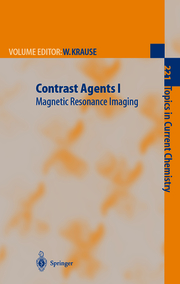-
Zusatztext
-
Extracellular MRI and X-ray contrast agents are characterized by their phar- cokinetic behaviour.After intravascular injection their plasma-level time curve is characeterized by two phases. The agents are rapidly distributed between plasma and interstitial spaces followed by renal elimination with a terminal half-live of approximatly 1-2 hours. They are excreted via the kidneys in unchanged form by glomerular filtration. Extracellular water-soluble contrast agents to be applied for X-ray imaging were introduced into clinical practice in 1923. Since that time they have proved to be most valuable tools in diagnostics.They contain iodine as the element of choice with a sufficiently high atomic weight difference to organic tissue. As positive contrast agents their attenuation of radiation is higher compared with the attenuation of the surrounding tissue. By this contrast enhancement X-ray diagnostics could be improved dramatically. In 2,4,6-triiodobenzoic acid derivatives iodine is firmly bound. Nowadays diamides of the 2,4,6-triiodo-5-acylamino-isophthalic acid like iopromide (Ultravist, Fig. 1) are used as non-ionic (neutral) X-ray contrast agents in most cases [1].
-
-
Kurztext
-
This series presents critical reviews of the present position and future trends in modern chemical researchShort and concise reports on chemistry, each written by the world renowned expertsStill valid and useful after 5 or 10 yearsMore information as well as the electronic version of the whole content available at: link.springer.de/series/tcc/
-
Detailansicht
Contrast Agents I
Magnetic Resonance Imaging, Topics in Current Chemistry 221
ISBN/EAN: 9783642075964
Umbreit-Nr.: 1597584
Sprache:
Englisch
Umfang: x, 249 S., 19 s/w Illustr., 2 farbige Illustr., 24
Format in cm:
Einband:
kartoniertes Buch
Erschienen am 15.12.2010
Auflage: 1/2002


